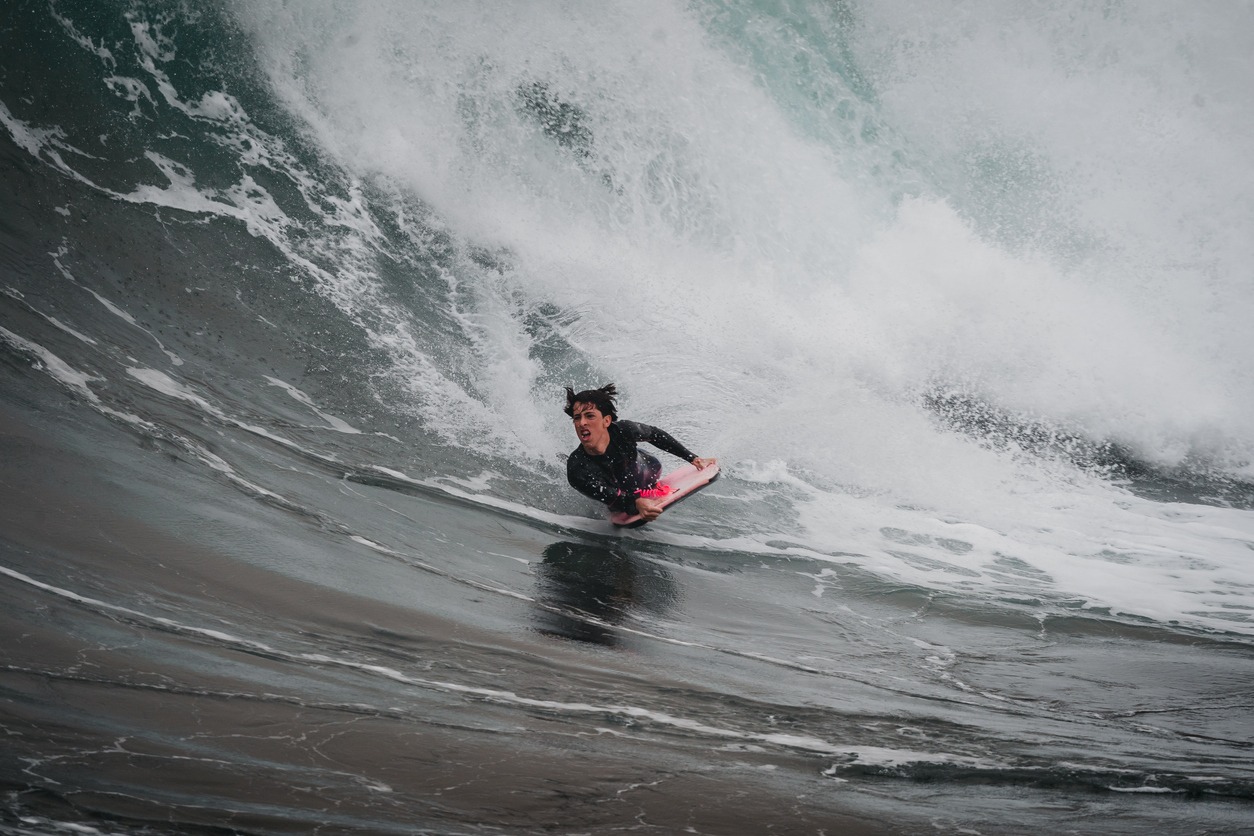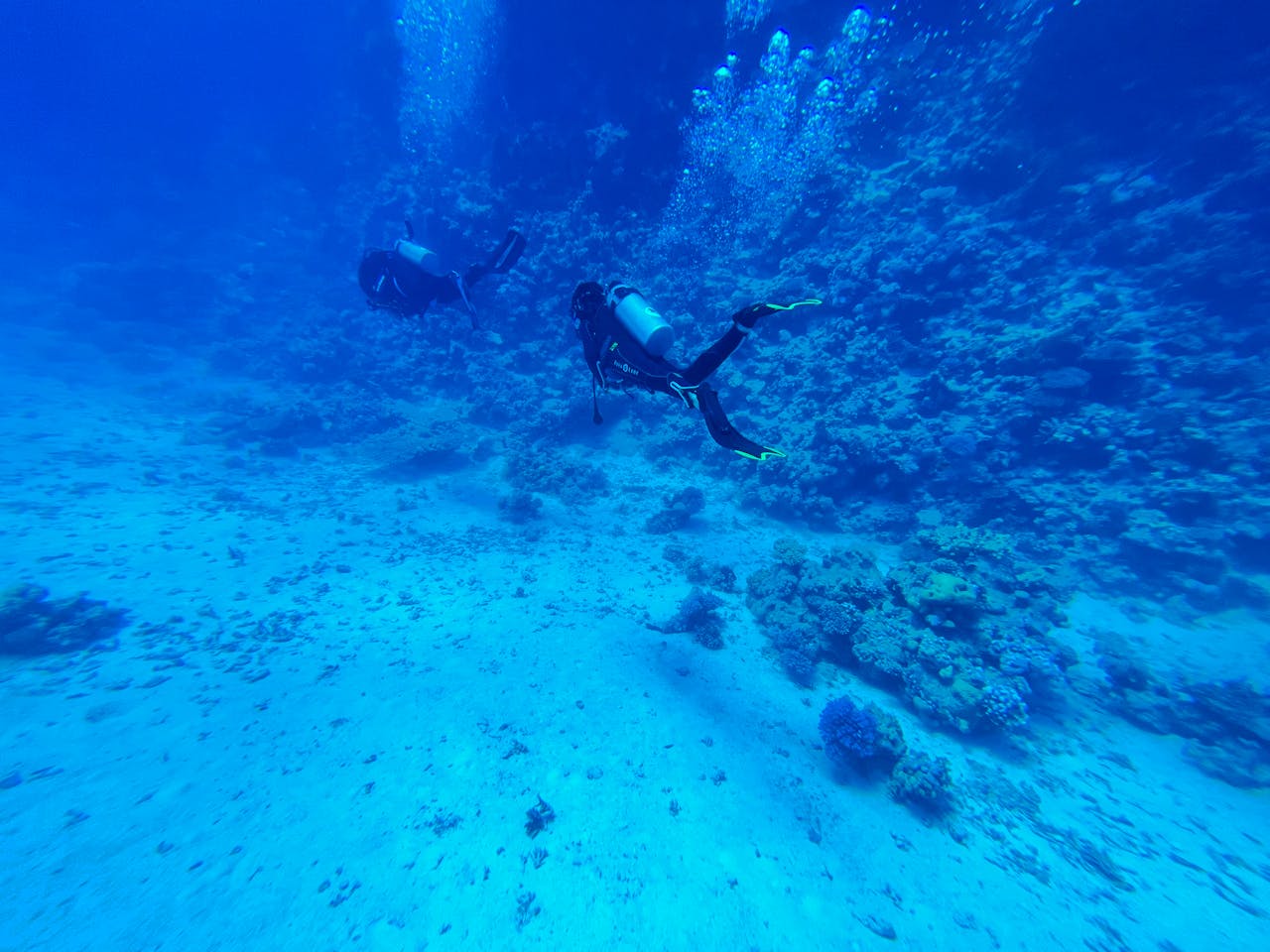The Origin Story of Stand-Up Paddleboards
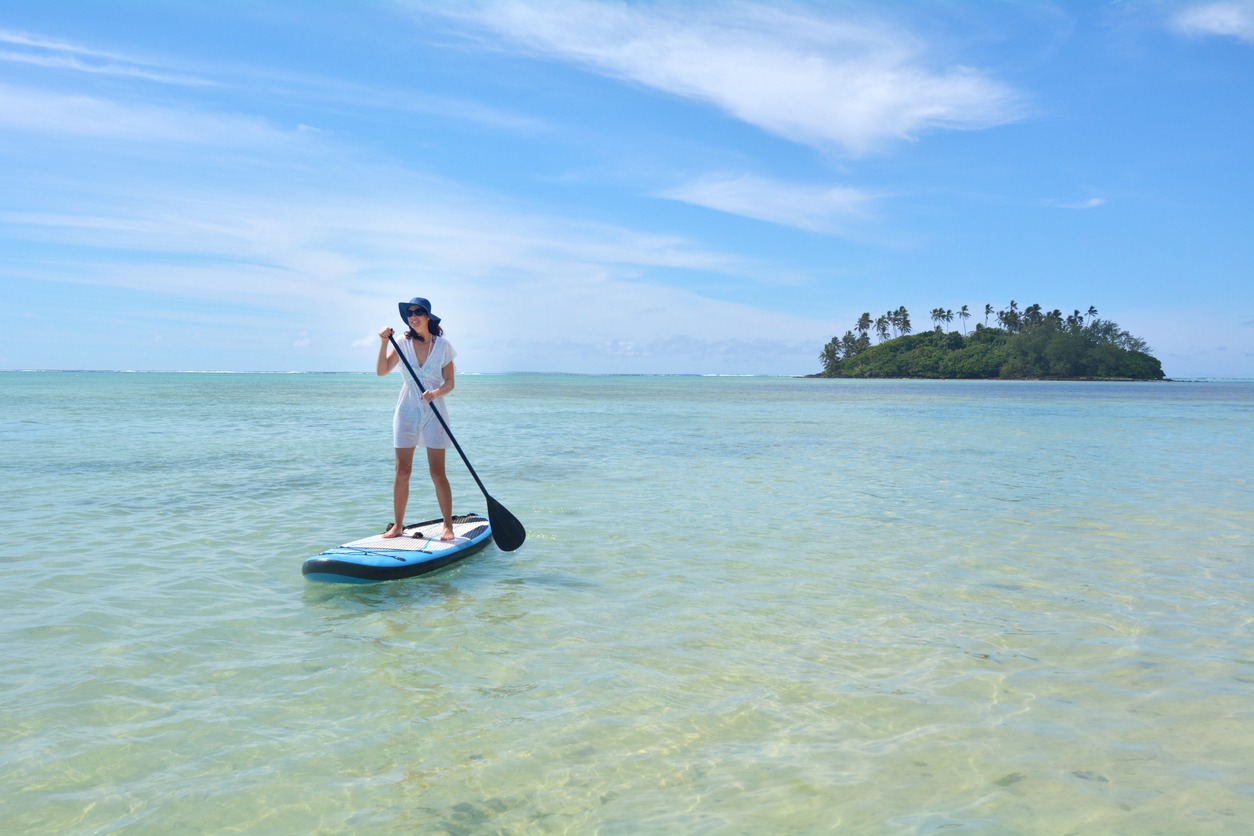
Stand-up paddleboarding (SUP) has ancient roots dating back to 3000 B.C., with early paddle propulsion methods used by diverse cultures worldwide. Polynesian traditions substantially influenced SUP culture, preserving paddling techniques and surfing skills. Hawaiian beach boys, including Duke Kahanamoku, innovated the sport in the early 20th century by using large boards and long paddles. The 1960s saw a resurgence, leading to California's SUP revolution in the early 2000s. Laird Hamilton's iconic 2002 photo launched SUP into the spotlight, sparking global interest and commercialization. Today, SUP has evolved with modern equipment and techniques, becoming a versatile water sport enjoyed by millions. This rich history is just the tip of the iceberg.
Ancient Roots of Paddle Propulsion
Three ancient civilizations stand out when tracing the origins of stand-up paddleboarding. In Peru, you'll find evidence of SUP-like devices dating back to 3000 B.C. The Caballitos de Totora, reed-based watercraft, were propelled using long bamboo shafts as paddles. These early Peruvian fishermen combined stand-up paddling with fishing and wave riding, showcasing a remarkable blend of utility and sport. The history of submerging and snorkeling reveals that ancient submariners in the Mediterranean also used techniques like holding a mouthful of air to equalize pressure, demonstrating the ingenuity of various civilizations in water-based activities.
Ancient African warriors demonstrated another early form of stand-up paddle propulsion. They ingeniously used spears as paddles on their dugout canoes, proving that necessity often breeds innovation in water travel.
The ancient Polynesians, renowned as some of the world's first true surfers, took stand-up paddle surfing to new heights. They used paddles to navigate their large surfboards while standing, laying the groundwork for modern SUP techniques.
These examples from diverse ancient cultures worldwide suggest a long-standing tradition of using paddles to propel oneself while standing on watercraft. The practice of Paddle Boarding SUP isn't just a modern phenomenon; it's deeply rooted in human history, spanning continents and millennia. From the Caballitos de Totora to African spears and Polynesian surf paddles, the ancient roots of SUP are as diverse as they are fascinating.
Polynesian Influence on SUP Culture
Among the many cultures that influenced stand-up paddleboarding, the Polynesians stand out for their deep impact on SUP culture. As pioneers of surfing, ancient Polynesians developed techniques like hee nalu, the native Hawaiian term for stand-up surfing. They used large surfboards and paddles to navigate waves, laying the foundation for modern stand up paddle boarding. The popularity surge in the 2000s helped bring widespread attention to this ancient practice.
Polynesian watermen's proficiency in using paddles to power out and onto waves is deeply rooted in their surfing traditions. This practice, along with the use of larger, padded boards by village chiefs, directly influenced the development of SUP.
The Polynesian influence on SUP culture is evident in several ways:
- Preservation of traditional paddling techniques
- Integration of surfing skills into SUP
- Use of larger boards for stability and maneuverability
- Emphasis on the connection between rider and water
- Incorporation of cultural values and respect for the ocean
Legendary Hawaiian watermen like Duke Kahanamoku and the Ah Choy brothers played pivotal roles in preserving and evolving Polynesian stand-up surfing. Their efforts helped bridge the gap between ancient practices and modern SUP, ensuring that the rich cultural heritage of Polynesian surfing continues to shape and inspire the sport today.
Hawaiian Beach Boys' Surfing Innovation
How did a group of charismatic Hawaiian surfers revolutionize the sport in the early 20th century? The answer lies in the innovative techniques developed by the Hawaiian beach boys of Waikiki.
Duke Kahanamoku, known as the "father of modern surfing," pioneered the use of large longboards and long, two-sided paddles for stand-up surfing. Inspired by Duke's methods, John "Zap" Zapotocky began crafting custom wooden paddles to propel himself on big longboards while standing up and traversing waves. Another notable figure, John "Pops" Ah Choy, made his mark by employing a unique combination of a wooden oar, hard hat, and knee pads for his stand-up surfing technique.
These beach boys' innovations laid the foundation for what would eventually become stand-up paddleboarding. Their experimentation with longboards and paddles in Waikiki's waters set the stage for a new way to surf and traverse the ocean. The techniques they developed in the early 1900s would go on to influence the global popularity of stand-up paddleboarding in the early 2000s, showcasing the lasting impact of their surfing innovation.
Duke Kahanamoku's Pioneering Contributions
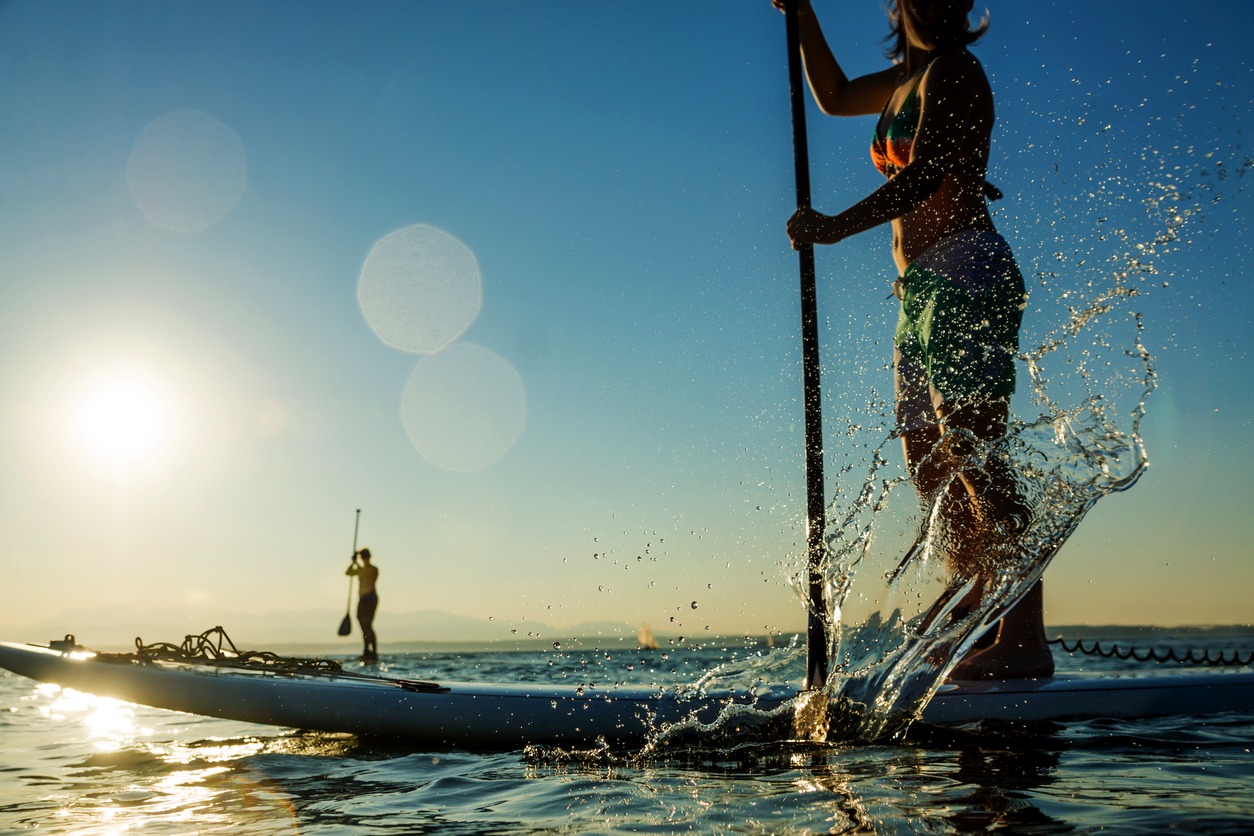
At the forefront of stand-up paddleboarding's evolution stood Duke Kahanamoku, the legendary "Father of Modern Surfing." This Olympic swimmer's contributions in the early 1900s laid the groundwork for what we recognize as modern SUP.
Kahanamoku's pioneering techniques at Waikiki Beach involved:
- Using long two-sided paddles
- Standing on large hollow wood surf skis from Australia
- Surfing waves while standing upright
- Demonstrating the sport publicly
- Inspiring other Hawaiian watermen to adopt the practice
You'll find that Kahanamoku's efforts weren't just about personal enjoyment. His charismatic performances and advocacy played a vital role in reviving an ancient Hawaiian practice and transforming it into a modern sport. By showcasing stand-up paddleboarding to wide audiences, he sparked interest that would eventually spread globally.
Kahanamoku's influence extended beyond his own paddling. He inspired other watermen, like John "Zap" Zapotocky, to embrace and further develop the sport. Through his demonstrations and promotion, Kahanamoku didn't just popularize stand-up paddleboarding; he laid the foundation for its evolution into the widely enjoyed activity we are familiar with today.
Resurgence in the 1960s
While Duke Kahanamoku's early efforts set the stage, it wasn't until the 1960s that stand-up paddleboarding experienced a true renaissance in Hawaii. This resurgence was led by pioneering watermen like Kahanamoku himself and the Ah Choy brothers, who helped popularize the practice of standing on longboards and using paddles to propel themselves through the water.
The Ah Choy brothers, renowned Waikiki beach boys, were particularly influential in this revival. They showcased their stand-up surfing skills on large boards, often using wooden oar-like paddles to traverse Hawaii's famous surf breaks. Their techniques and style caught the attention of locals and visitors alike, sparking renewed interest in this unique form of paddling.
During this period, stand-up paddling became a thrilling way to access and ride Hawaii's renowned waves. The 1960s resurgence laid the groundwork for the sport's eventual global spread and mainstream popularity in the early 2000s. By combining elements of traditional surfing with the added control and maneuverability of a paddle, stand-up paddleboarding carved out its own niche in water sports history.
California's SUP Revolution
Although stand-up paddleboarding had its roots in Hawaii, it was California that truly ignited the modern SUP revolution in the early 2000s. Pioneering watermen like Laird Hamilton and Dave Kalama reintroduced the sport to the Golden State, sparking a new wave of popularity that would soon sweep across the nation.
California's SUP revolution was fueled by several key factors:
- Formation of the first professional stand-up paddle racing tour in 2002
- Development of specialized SUP equipment by companies like C4 Waterman
- Favorable coastal conditions perfect for paddling
- Inclusion of SUP racing in major water sports events
- Natural appeal as a recreational and fitness activity
The rapid rise of SUP in California wasn't just a passing trend. It marked a significant shift from the Beach Boy Surfing era to a new age of water sports. The sport's growth was further solidified by its inclusion in prestigious events like the Molokai 2 Oahu Paddleboard World Championship and the Battle of the Paddle. These competitions, along with the Buffalo Big Board Contest, helped boost SUP from a niche activity to a mainstream water sport, cementing California's role in shaping the modern stand-up paddleboarding terrain.
Laird Hamilton's Game-Changing Photo
The year 2002 marked a turning point for stand-up paddleboarding, thanks to a single photograph of Laird Hamilton. While legends like Duke Kahanamoku, Leroy and Pops Ah Choy had kept the ancient Polynesian practice alive, it was Hamilton's iconic image that reignited global interest in the sport.
You've probably seen the photo: Hamilton standing tall on a surfboard, wielding an American flag-adorned paddle. This simple yet powerful visual captured the public's imagination and sparked a revolution in water sports. Unlike the traditional prone surfing that Captain James Cook might have witnessed, Hamilton's technique of paddling while standing upright offered a fresh viewpoint on wave riding.
The image's circulation in major surf media outlets propelled stand-up paddleboarding into the spotlight. Suddenly, what Brian Keaulana and John Pops had been doing for years became a mainstream pursuit. Hamilton's pioneering approach paved the way for the sport's rapid growth and evolution.
As you look at modern stand-up paddleboards today, remember that it all started with Hamilton's game-changing photo. It's a record to how a single image can revive an ancient practice and birth a global movement.
Global Spread and Commercialization
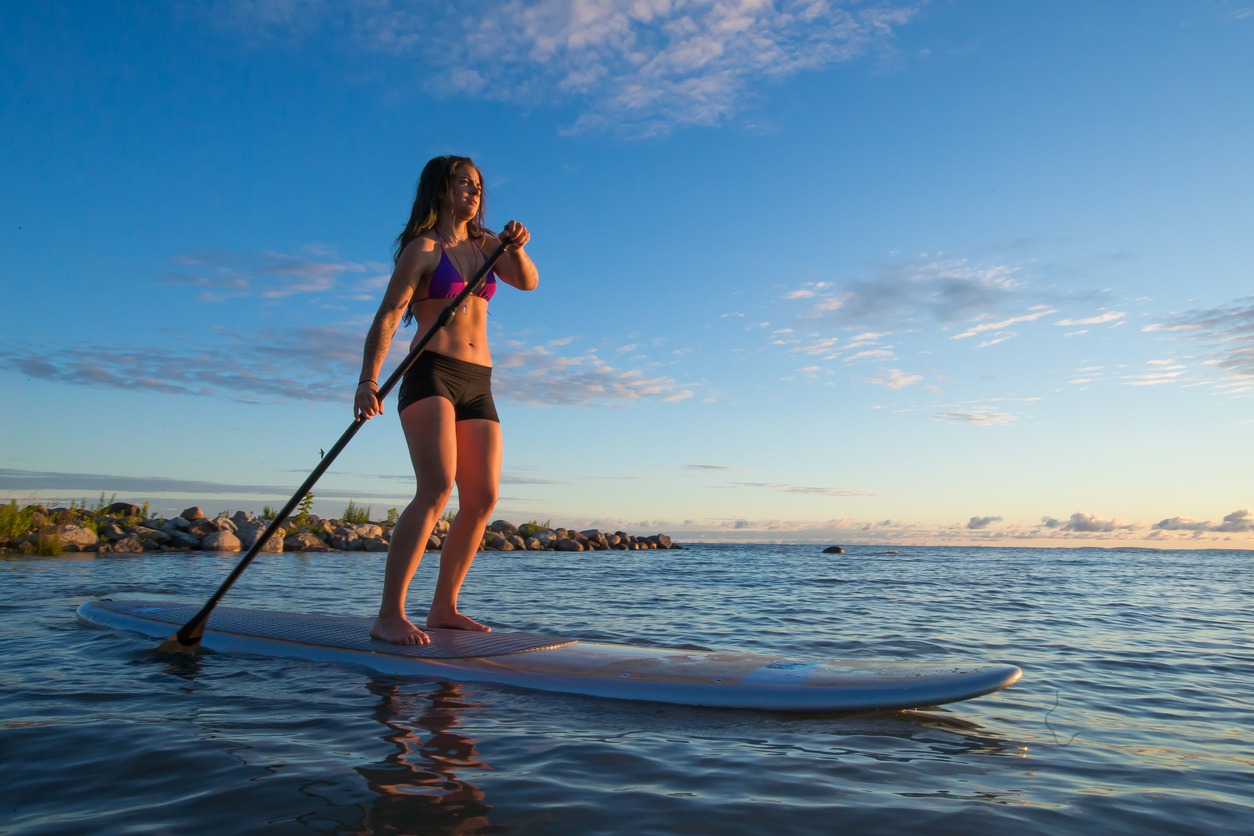
Following Laird Hamilton's iconic photo, stand-up paddleboarding exploded onto the global stage. The sport's modern incarnation, rooted in the traditions of Duke Kahanamoku and Leroy, quickly spread beyond its Hawaiian origins. You'd find SUP boards being used in waters worldwide, as the History of Stand-up paddleboarding took an exciting turn.
The early 2000s saw rapid commercialization and growth, transforming SUP into a multi-million dollar industry. Beach boys who would surf the waves now had a new way to enjoy the water. SUP History was being written as the sport gained mainstream appeal across continents.
The global spread of stand-up paddleboarding was fueled by several factors:
- Accessibility for all skill levels
- Versatility across different water environments
- Adoption by both recreational enthusiasts and competitive athletes
- Emergence of dedicated SUP equipment manufacturers
- Establishment of professional tours and competitions
As the sport gained traction, specialized gear and accessories flooded the market. SUP-focused businesses and services sprouted up, catering to the growing demand. From North America to Europe, Asia to Australia, stand-up paddleboarding became a beloved water activity for millions worldwide.
Modern SUP Equipment Evolution
As stand-up paddleboarding surged in popularity, how did the equipment evolve to meet growing demands? You'll find that modern stand-up paddleboards have come a long way from their early counterparts. Gone are the days of long bamboo paddles; today's SUP paddles feature carbon fiber construction and specialized blade shapes for ideal performance.
The boards themselves have undergone significant changes. While the first European enthusiasts and Oahu Paddleboard pioneers used custom-made designs, you'll now find specialized production boards with advanced features. These include fin systems, rails, and concave bottoms that enhance stability, speed, and maneuverability.
One of the most significant innovations has been the development of inflatable SUP boards. This advancement has made the sport more accessible and portable, allowing you to easily transport and store your board. Additionally, technological improvements in construction materials have resulted in durable yet lightweight boards using epoxy resins and composites.
Modern SUPs also incorporate user-friendly features like leashes, carry handles, and tie-down points, enhancing versatility. As the first person to paddle with these advanced designs, you'll appreciate how far the equipment has evolved to meet the needs of both surf instructors and recreational paddlers alike.

